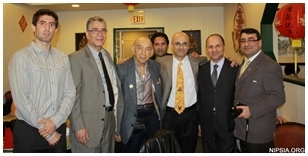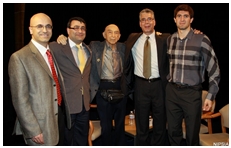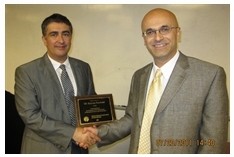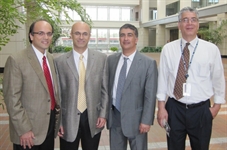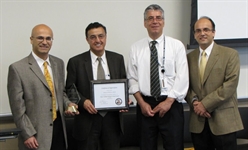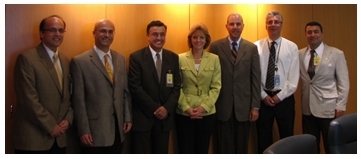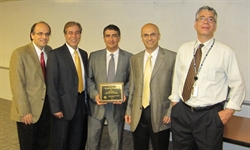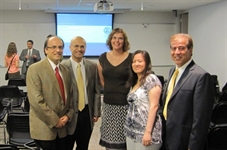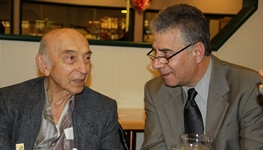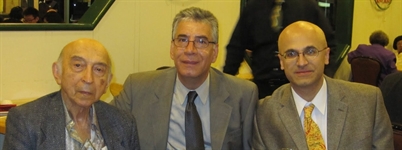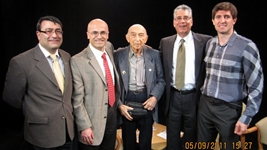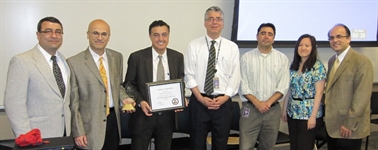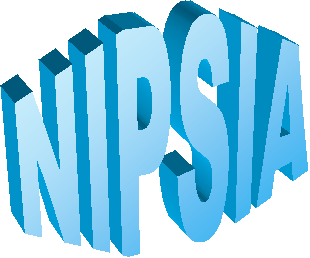 |
National Intellectual Property Society of Iranian Americans |
Filing a US patent by yourself
This short article has some pointers about filing a US patent application by yourself. It is recmmended that you use a patent attorney or patent agent to file a patent application, but alternatively, you can file that yourself. There is a good instruction guide on the USPTO (US Patent & Trademark Office) web site for inventors who want to file themselves. The USPTO is under the Dept. of Commerce, and it is the US government agency in charge of registration of patents and trademarks in the United States.
The most common type of patent is the Utility Patent. It can include a process, machine, article of manufacturer, or composition of matter.
The USPTO main web site includes a patent process flow chart, as well as resources for the independent inventors found at: http://www.uspto.gov/inventors/index.jsp
including the inventor assistant center at:
http://www.uspto.gov/inventors/iac/index.jsp
You can also contact the USPTO by teplephone for more information about filing patent applications:
800-PTO-9199 (800-786-9199)
571-272-1000
TTY customers can dial 571-272-9950 for customer assistance.
USPTO Hours of Operation: Monday - Friday, 8:30 AM - 5:00 PM (EST)
You can file a patent application on-line, by mail, or in person (in Alexandria, VA).
-
- If you want to file on-line, you should convert your files into PDF format.
- If you want to file by mail, make sure that you get a receipt and tracking number, to be able to prove when you mail it and when USPTO gets your mail.
- If you want to file in person, you can drive to the USPTO campus in Alexandria, VA, Mon-Fri, and get a receipt of your filing. Their campus/headquarters is located near both King Street Metro Station and Eisenhower Metro Station.
The USPTO locations are given at:
http://www.uspto.gov/about/contacts/locations/index.jsp
The map of Alexandria campus is given at:
http://www.uspto.gov/about/contacts/locations/map_alex.jsp
The USPTO also have a new satellite office in Detroit:
USPTO DETROIT
300 River Place South, Suite 2900
Detroit, MI 48207
Phone: (313) 446-4800
In addition, the USPTO has libraries in different states, all over the country:
http://www.uspto.gov/products/library/ptdl/locations/index.jsp
To prepare for filing, first, you should do a search, e.g., on Internet, Google, USPTO web site, industry, and market, to make sure nobody has come up with your invention before, or your invention is not an obvious variation of the prior methods, devices, or systems. The USPTO Public Search Facility, with computers running powerful patent search engines, is also located at the main campus, Madison East, 1st Floor. You can also do a search from your home, using USPTO web site (http://patft.uspto.gov/) or (http://patft.uspto.gov/netahtml/PTO/search-adv.htm), but the search at home may not as comprehensive as the one at the Public Search Facility. Also see a pointer on patent search in these resources. There are also some search firms or law firms that do the search for you, for a fee. You should ask their rates or fees in writing, before they start the work.
A Utility Patent application usually has the following sections or components (among other forms and documents):
-
- title
- abstract
- background
- brief description of figures
- summary
- detailed description
- claims
- figures
Claim is the legal language that protects and designates the boundary or scope of your invention. You may have more than one embodiment or invention in your specification. For example, your specification may include improvements on microprocessor and mouse of a computer, which are considered 2 different inventions, and thus, they should be claimed separately in 2 different patent applications, within the same family of patents. You can start from one jumbo spec, and then split them later, as children cases from the original parent case.
Searching and reading old patents (prior art) is a good way of learning about format and structure of patents. However, writing claims is tricky, and it is recommended that you hire a professional for that (patent attorney or patent agent), because most of the value of your patent comes from good and solid claims, with proper scope. We generally have 2 types of claims: independent claim and dependent claim. The claims have tree structure, where independent claims are at the roots and have broader scope, and dependent claims are the branches and leaves with narrower scope. The main value of the patents are generally derived from their independent claims, because if anyone infringes any dependent claim, the root independent claim with broader scope is also infringed, but the inverse may not be true.
